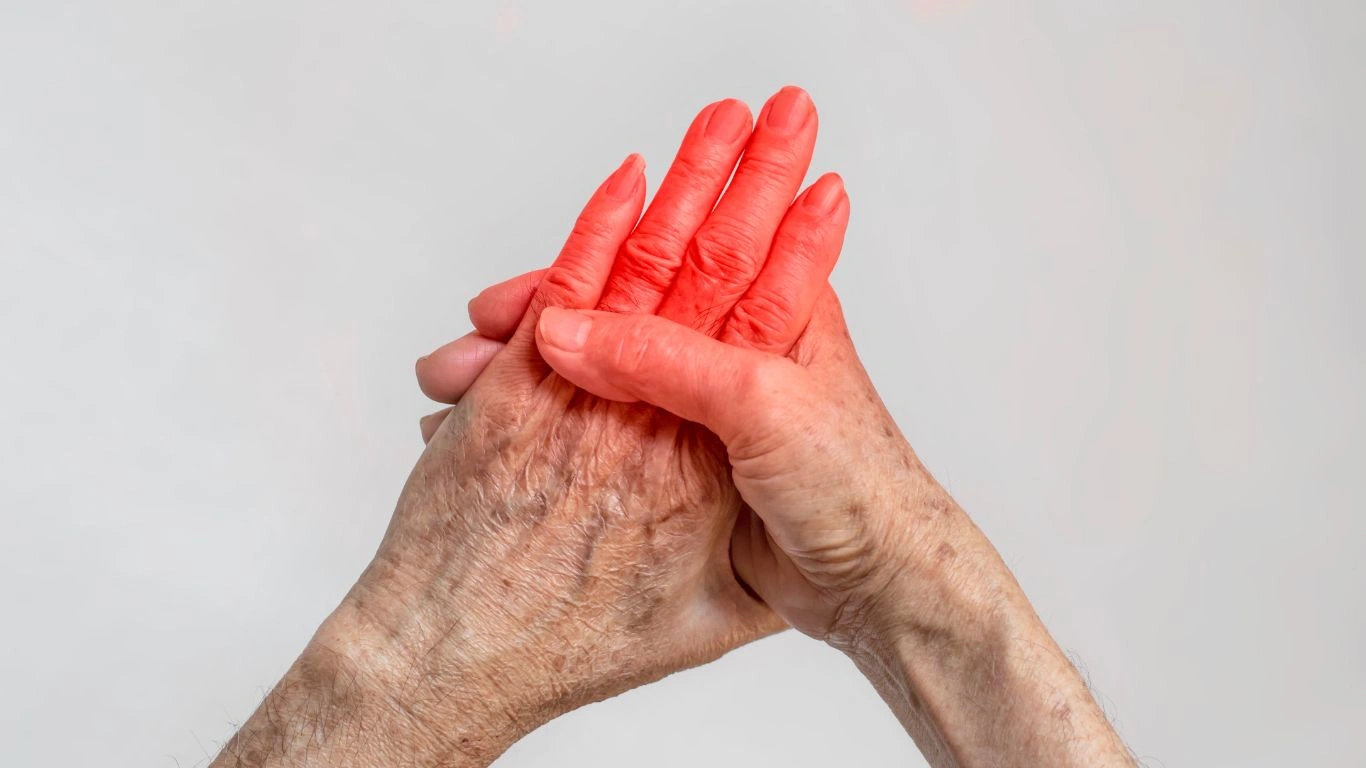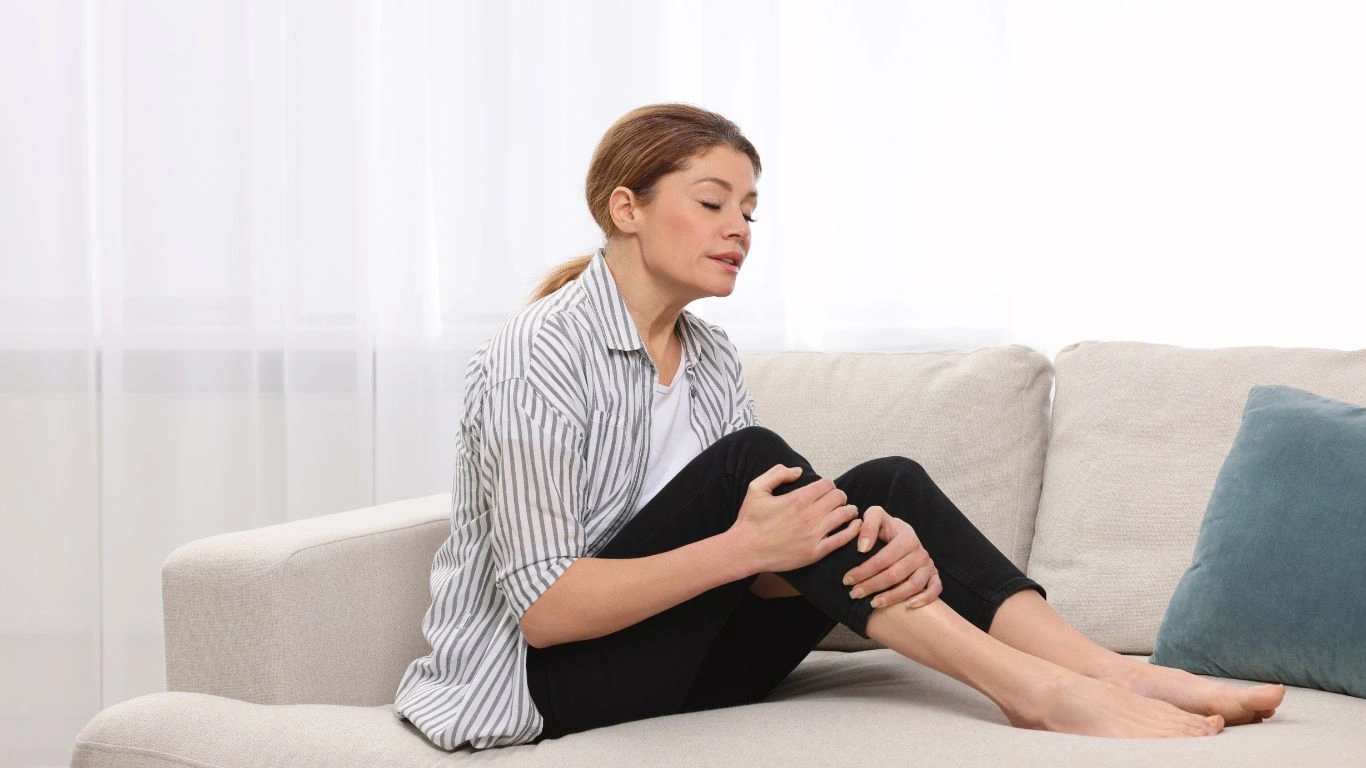Can Rheumatoid Arthritis Cause Low Blood Pressure? What You Need to Know
Can rheumatoid arthritis cause low blood pressure? You’d be surprised how often I get asked this question, and honestly—it’s not a simple yes or no. As a Rheumatology nurse practitioner, I’ve had plenty of patients who came in for joint pain but ended up sharing symptoms like dizziness, fatigue, or even fainting. Naturally, the question arises: is it the disease itself, the meds, or something else entirely? Let’s unpack that together in a real, no-jargon way—because chances are, if you’re wondering this, you or someone close to you might be dealing with both RA and some frustrating blood pressure issues.
Understanding Rheumatoid Arthritis Beyond the Joints

RA is often thought of as just a joint problem—but that’s barely scratching the surface. Rheumatoid arthritis is actually an autoimmune condition, which means your immune system mistakenly attacks your own body. In the case of RA, it’s not just about swollen knees or painful fingers. The inflammation can impact blood vessels, organs, and yep—you guessed it—your cardiovascular system too.
I’ve had patients walk into my clinic with morning stiffness in their hands and leave with a new appreciation for how whole-body systemic RA can be. And when the inflammation starts affecting blood vessels and the autonomic nervous system, that’s when we start to see interesting changes—like dips in blood pressure that seem to come out of nowhere.
Can Rheumatoid Arthritis Cause Low Blood Pressure? Let’s Dig In

The short answer? It can—indirectly or sometimes directly. Let’s break it down with some real-world insight:
1. Autonomic Dysfunction
One of the sneaky ways RA messes with your system is through autonomic dysfunction. That’s a fancy term for when the part of your nervous system that handles things like heart rate and blood pressure goes a bit haywire. When this system gets thrown off balance, you may experience symptoms like:
- Lightheadedness, especially when standing
- Fatigue even after resting
- Chills or sweating without a clear reason
- Blood pressure that dips unexpectedly
I remember one patient—let’s call her Marie—who came in complaining about feeling like she was going to faint every time she stood up from bed. At first, we chalked it up to dehydration. But after some digging, we discovered her autonomic system wasn’t regulating properly—something I’ve seen in more than a handful of RA cases.
2. The Medication Factor
RA treatment is no walk in the park. The meds are powerful, and for good reason. But some of them can mess with your blood pressure. For example:
- Biologics and DMARDs: These can lower inflammation but also suppress your immune system. Some people experience dizziness or low BP as side effects.
- NSAIDs: While helpful for pain, long-term use can impact kidney function, which in turn can affect blood pressure regulation.
- Steroids: Believe it or not, while they can increase BP in some people, coming off them too quickly might cause a sudden drop in pressure. I’ve seen this more than once during tapering plans.
If you’ve ever felt woozy during a medication adjustment, you’re not alone. As someone who’s managed hundreds of tapering schedules and med switches, I always encourage patients to track symptoms and say something early. Dizziness or fainting isn’t something to ignore.
3. Chronic Inflammation’s Impact on Blood Vessels
Here’s where the science meets everyday symptoms. Chronic inflammation from RA can lead to changes in your blood vessels—sometimes making them less responsive to normal pressure cues. That means your body might not react as quickly when you stand up or exert yourself, which can result in low blood pressure or orthostatic hypotension.
It’s like your body’s internal GPS is just a few steps behind, not telling your vessels to constrict fast enough to maintain good blood flow. I like to explain it to patients this way: “You’re not just tired, your blood isn’t getting where it needs to go fast enough—and that’s why you feel off balance.”
RA, Fatigue, and Blood Pressure: It’s All Connected

Let’s talk about the crushing fatigue that comes with RA. You know that bone-deep tiredness that sleep doesn’t fix? Sometimes, low blood pressure plays a role. When blood flow is sluggish, your brain and muscles don’t get enough oxygen and nutrients—and boom, you’re dragging all day.
Here’s something I’ve seen in practice: patients who were convinced their fatigue was “just the RA” started feeling a bit better when we managed their blood pressure more carefully. Sometimes that meant adjusting meds. Other times it was as simple as increasing salt intake (with a doc’s OK, of course), staying hydrated, or wearing compression socks to help with circulation.
What’s important is that you don’t have to just “tough it out.” There’s often a reason behind those low-energy days—and sometimes it’s hidden in your blood pressure numbers.
When RA Flares and Blood Pressure Crashes

RA flares can hit hard and fast. One day you’re managing okay, the next—your joints are inflamed, fatigue is unbearable, and, weirdly, you’re feeling faint or dizzy. Sound familiar? I’ve seen it enough times to spot the pattern. In some patients, a sudden flare is followed by a noticeable drop in blood pressure. Why? Because the immune system is in overdrive, and that can spark systemic inflammation that dilates blood vessels—leading to a drop in vascular resistance and, consequently, BP.
I remember a patient—I’ll call him Mark—who had been stable for months. Then came a stressful life event, and boom: joint pain, brain fog, and dizzy spells all rolled in together. His blood pressure had tanked during the flare. We adjusted a few meds, encouraged extra hydration, and slowly, his pressure normalized. What stuck with me was how clearly his BP was reflecting the state of his disease.
Stress, Pain, and the Cortisol Connection

Here’s where things get even more layered. Chronic stress is common in people living with RA—it’s exhausting dealing with constant pain, flares, and fatigue. But stress affects more than your mood. It impacts your cortisol levels, which play a role in blood pressure regulation.
Cortisol is your body’s natural steroid—produced by the adrenal glands. During times of stress, your body should produce more of it. But in many RA patients, especially those who’ve been on steroid meds like prednisone long-term, the adrenals get a little sluggish. They stop producing adequate cortisol on their own. This can lead to something called adrenal insufficiency—where your body just can’t keep up, especially during stress. And one of the key symptoms? Low blood pressure.
Some signs your body might be struggling with cortisol regulation include:
- Chronic fatigue that doesn’t improve with rest
- Dizziness upon standing (postural hypotension)
- Salt cravings
- Unexplained weight loss
I’ve had several patients who were tapering off steroids and started experiencing these very symptoms. A quick morning cortisol test often gave us clues. In some cases, we had to pause the taper, supplement with low-dose hydrocortisone, or simply allow more time for the adrenals to bounce back.
Can Lifestyle Habits Help Balance Blood Pressure in RA?

Absolutely—and I’m a big believer in small, consistent habits that add up. While managing RA often requires medication, there’s plenty we can do on the lifestyle front to help stabilize blood pressure. These aren’t just “generic wellness tips”—they’re things I’ve seen work, firsthand, for real people navigating this daily grind.
Hydration Is Key (And Often Overlooked)
It’s easy to underestimate how much water we really need—especially on those days when everything hurts and getting off the couch feels like a chore. But dehydration is one of the fastest ways to drop your BP. I always tell my patients: keep a reusable bottle nearby and sip often, even if you’re not feeling thirsty.
Salt Isn’t the Enemy (In Moderation)
For those with RA who are prone to low BP, salt can actually help. I’m not saying go overboard—but a little extra sodium, especially in the morning or after activity, can boost circulating volume and help prevent dizziness. Of course, always talk to your provider before changing your diet—but I’ve had success adding a pinch of Himalayan salt to morning lemon water. Simple, but surprisingly effective.
Compression Gear and Gentle Movement
I’m a fan of compression socks—not glamorous, I know, but they’re great at supporting blood flow and preventing that afternoon slump where blood pools in the legs. Add in some light stretching or a slow-paced walk after meals, and your circulation gets a much-needed assist.
Tracking Patterns Helps More Than You Think
If you’re reading this and thinking, “Hmm, I do get dizzy sometimes, but I never thought to connect it to my RA,” you’re not alone. I always encourage patients to track symptoms—especially the timing of low BP episodes. Is it worse in the morning? After meds? During flares? That kind of info helps guide better care.
Use a basic journal or even a notes app. Record:
- Blood pressure readings if you check them at home
- How you’re feeling physically and mentally
- What you ate, drank, and which meds you took
- Sleep quality and stress levels
It doesn’t have to be fancy. Just honest. I can’t count how many times a patient’s casual note like “felt dizzy after lunch” led to important changes in their care plan.
So… Is It RA, the Meds, or Something Else?

That’s the million-dollar question, right? Unfortunately, there’s no universal answer. Sometimes low blood pressure in RA is from inflammation or autonomic issues. Other times, it’s a side effect of meds, or an unrelated issue that just happens to show up alongside the RA. That’s why context matters so much. As a provider, I look at the full picture—not just a BP reading on a chart.
What’s most important is not brushing off these symptoms as “just part of RA.” Dizziness, fatigue, or lightheadedness aren’t things you should just push through. They could be clues—your body’s way of saying, “Hey, something’s off here.”
And from where I sit—seeing patients daily, managing their medications, listening to their day-to-day struggles—that’s where the real healing happens. When we connect the dots between inflammation, medication, and symptoms like low blood pressure, we can craft better, more personalized care.
What to Watch For: When Low Blood Pressure Is More Than Just a Side Effect

Sometimes, low blood pressure in someone with rheumatoid arthritis is just a temporary blip—maybe it’s a medication side effect, or maybe they skipped lunch and had a long day. But sometimes, it’s more than that. The trick is knowing when it’s something to monitor… and when it’s time to dig deeper.
In my practice, I’ve had patients who brushed off symptoms for months—thinking the dizziness, brain fog, and energy crashes were “just part of RA.” But when we finally ran some tests, we uncovered deeper issues: adrenal insufficiency, anemia, electrolyte imbalances, or even early signs of vasculitis (inflammation of the blood vessels, which can absolutely mess with BP).
Here are a few red flags I always tell my patients to look out for:
- Lightheadedness that happens daily, especially when standing
- Fainting or near-fainting episodes
- Blurred vision or heart palpitations
- Nausea, cold sweats, or clamminess for no reason
- Ongoing fatigue that feels like more than just being tired
If you’re dealing with any of those consistently, please—don’t chalk it up to “just being tired” or part of the usual RA fatigue. Bring it up with your healthcare provider. A quick BP check, blood panel, or adrenal test could uncover a treatable issue hiding in plain sight.
How I Help My RA Patients Balance It All

Managing rheumatoid arthritis is like juggling a dozen spinning plates. There’s the pain, the inflammation, the fatigue, the meds—and then add in blood pressure issues? It’s a lot. But here’s the thing: when we zoom out and look at the whole picture, we can actually make things a little easier.
Here are a few real-life strategies I use with my patients:
1. Simplify the Medication Regimen
When people are on multiple RA meds—plus things for blood pressure, cholesterol, maybe thyroid—it’s easy for interactions or timing issues to creep in. I often work with pharmacists or primary care providers to space things out in a way that supports stable BP and avoids overlaps that could cause dizziness or fatigue.
It’s not uncommon for someone to be on a biologic, methotrexate, and a blood pressure med, and never realize how the combo is playing out. Just last month, I had a patient who was taking everything in the morning and was crashing by noon. We rearranged the schedule—added hydration before meds—and like magic, his symptoms eased up.
2. Encourage Realistic Movement
One of the best ways to regulate blood pressure naturally? Gentle, consistent movement. I don’t mean running marathons—heck, I don’t even mean speed walking. I’m talking about slow yoga flows, chair stretches, or 10-minute walks after meals. Movement helps your circulation adapt better to positional changes, which reduces those sudden BP drops.
I always tell patients: “If you can move it, groove it.” Even on flare days, a little guided stretching or breathwork can stimulate the autonomic system in a healthy way.
3. Personalize the Hydration + Nutrition Plan
Dehydration and low sodium are sneaky contributors to low blood pressure. With RA, especially if you’re taking meds like diuretics or steroids, you need a customized hydration plan. That might mean more water, a pinch of sea salt, or even electrolyte packets (not the sugary kind). We also talk about eating enough throughout the day—not skipping meals because of fatigue or nausea.
One trick I love? Start the morning with a hydrating base—lemon water with a dash of salt and honey. It gently wakes up the system and supports adrenal function.
Putting It All Together: A Whole-Person Approach
So, back to our main question—can rheumatoid arthritis cause low blood pressure? As you’ve seen by now, the answer is layered. Yes, it can. But it’s usually not the RA alone. It’s the meds, the inflammation, the lifestyle impact, the stress—it all weaves together in a way that makes you feel “off.”
But here’s the hopeful part: you don’t have to figure it out alone. I’ve walked this path with many patients, and what I’ve learned is this—when we treat RA with a whole-person mindset, we get better outcomes. That means looking at everything—from joint swelling to hydration habits to how your blood pressure behaves when you stand up too fast.
If you’re reading this and thinking, “Wow, that’s me,” then good news—you’ve got options. Talk to your provider. Bring up those low BP symptoms. Ask questions. Keep a journal. You deserve a care plan that works for you, not just for your labs.
References
Disclaimer
This article is for educational purposes only and is not intended to replace professional medical advice, diagnosis, or treatment. Always consult your healthcare provider before making changes to your health routine, especially if you are managing a chronic condition like rheumatoid arthritis.

Tarra Nugroho is a dedicated Nurse Practitioner with a strong foundation in family and preventive care. She brings both compassion and clinical expertise to her practice, focusing on patient-centered care and health education. As a contributor to Healthusias.com, Tarra translates medical knowledge into clear, empowering articles on topics like women’s health, chronic disease management, and lifestyle medicine. Her mission is simple: help people feel seen, heard, and informed—both in the clinic and through the content she creates. When she’s not caring for patients, Tarra enjoys weekend hikes, plant-based cooking, and curling up with a good health podcast.






